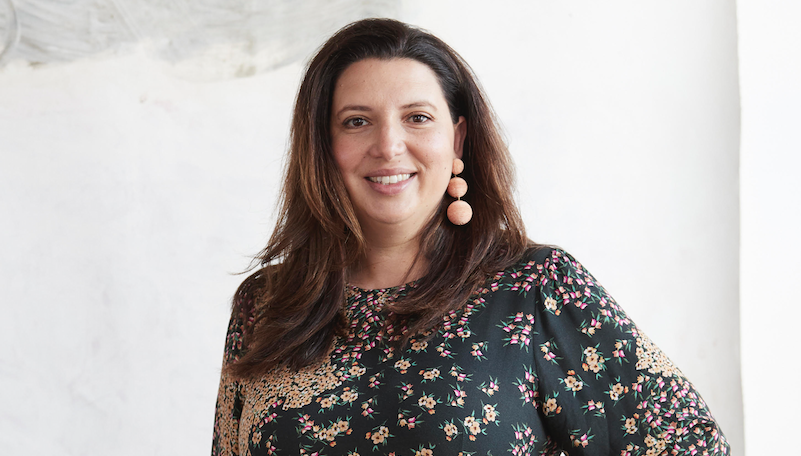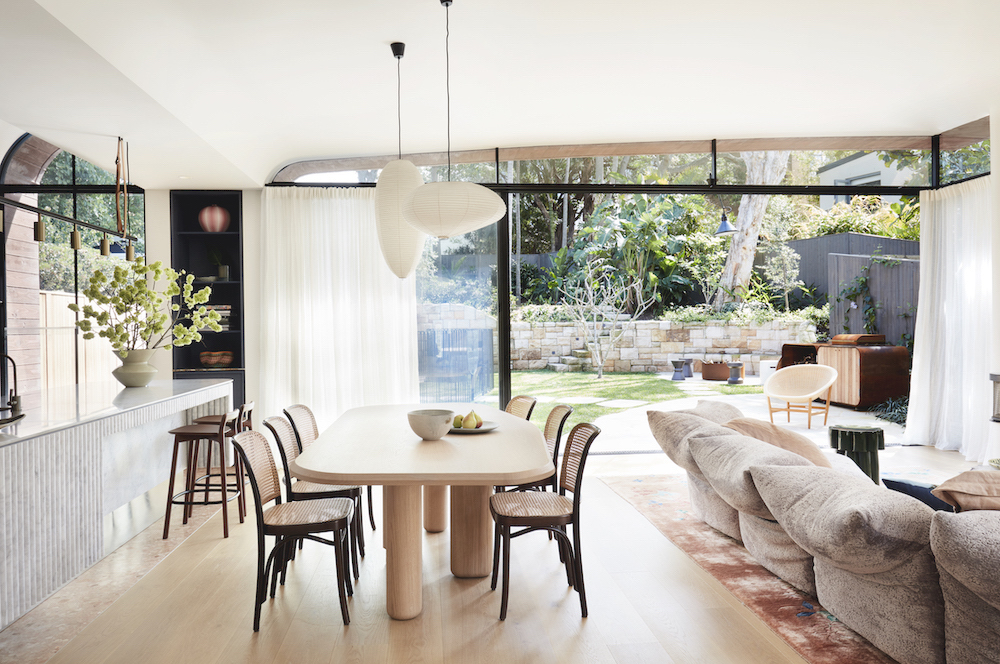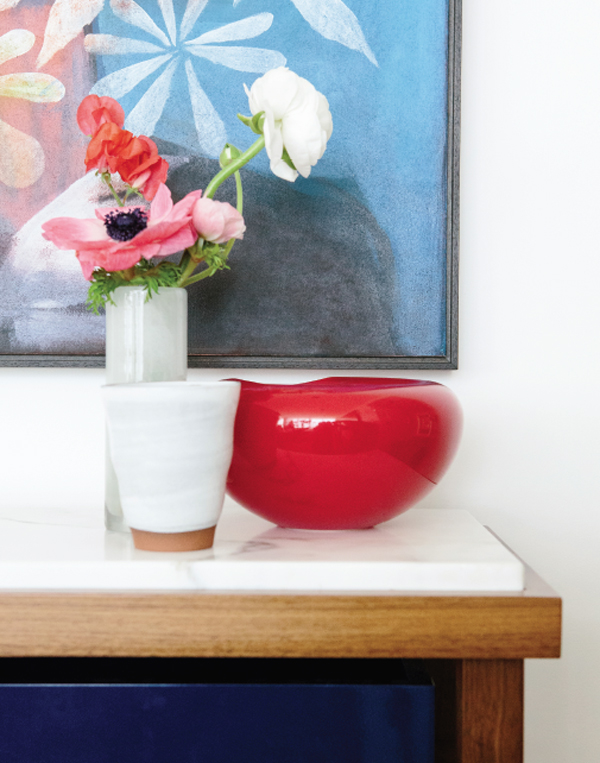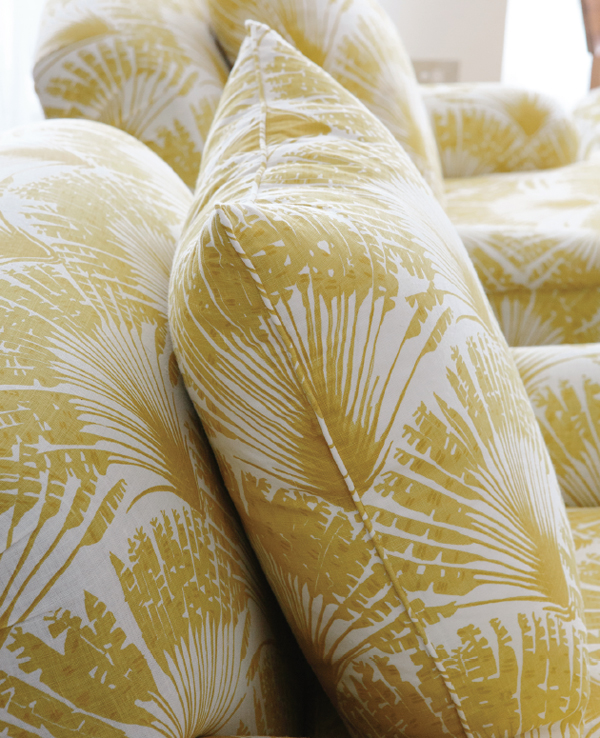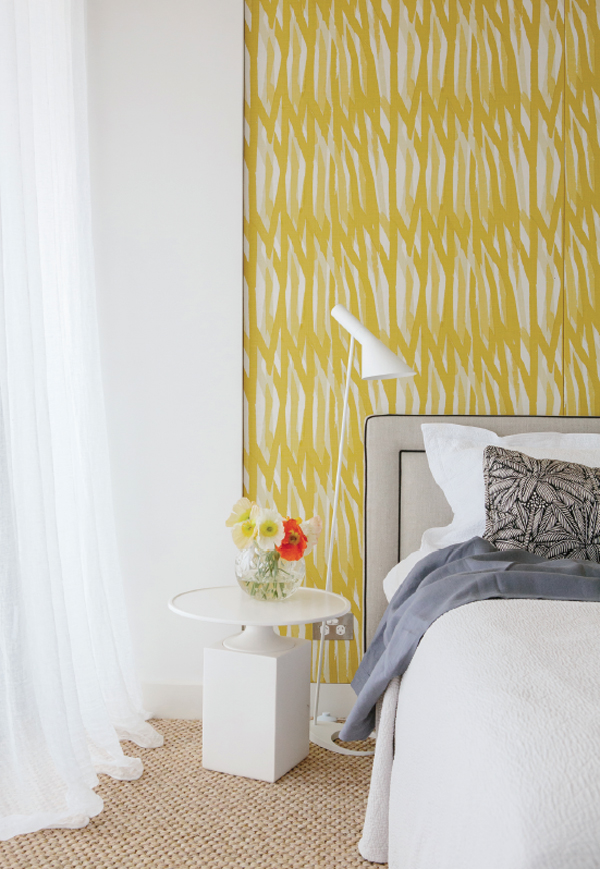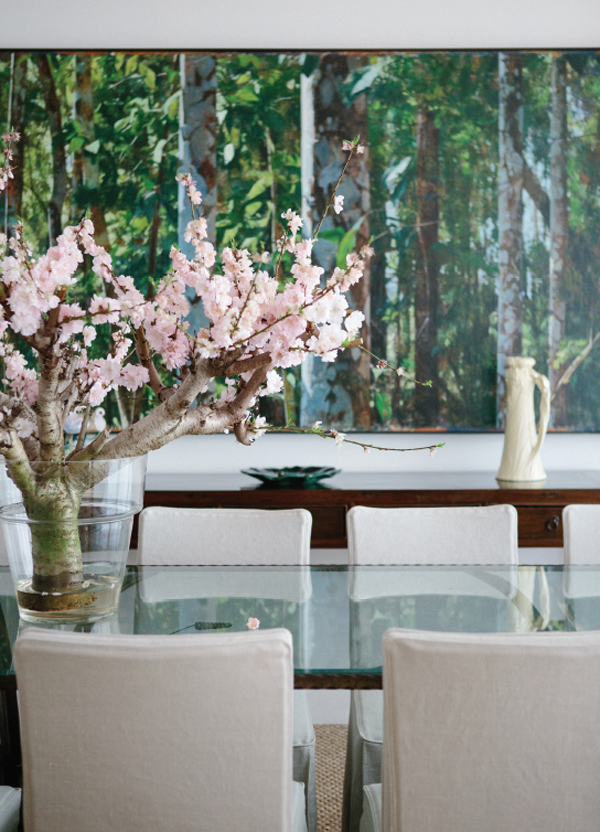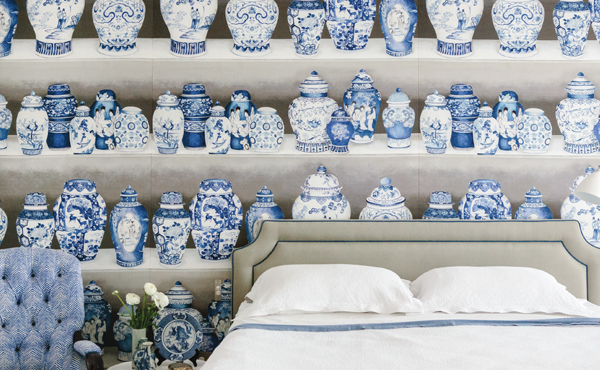
Potts Point Pied-À-Terre by Arent&Pyke
Potts Point Pied-À-Terre by Arent&Pyke
Share
Images by Luisa Brimble. Above: Poliform chairs in Christopher Farr fabric (Breakwater, designed by Christopher Farr). Bespoke lounge in Quadrille fabric (Melinda, designed by Allan Campbell).
Resplendent with colour, texture, detail and form, this Potts Point pied-à-terre is gorgeously and generously indulgent. Effectively a counterpoint to the owners’ recently completed and highly architectural Tobias Partners home, Arent&Pyke’s interior embraces the same level of luxury with textiles of colour and warmth. “They wanted to have more of their objects around them, pattern and upholstered items, it was really about enjoying the contrast of the two,” says Juliette Arent.
Tasked with incorporating a lively art, furniture and ceramics collection, Arent&Pyke chose an interesting path. Rather than gallery hang, that is, provide a neutral palette for the art to dominate, the studio has opted for the French colonial tradition of complementary dominants. To do so, the designers transformed a very dark, very stylised and masculine interior into a home of brightness and breeze. Quite a task given that every surface was papered, textured, built or affected towards a highly decorated interior.
Indeed, the woven grass texture, swirling pink on black wallpaper and built-in cabinetry all went. “We took out a whole wall of mirror. Yes, there is a harbour view and, yes, it is a beautiful view…” says Sarah-Jane Pyke, with Juliette Arent continuing, “but there were no walls for art and they had all this beautiful work, so we reintroduced the walls.” Once stripped of decoration, the abundance of downlighting became apparent and half was summarily removed, being replaced by lamps and floor lights as more intimate options. Again, without the decoration, the skirting was deemed insufficient and was accordingly heightened to a more generous proportion.
Bespoke furniture, and adventurous clients with a striking collection, provided the designers with an avenue for holding the eye at low to mid centre to expand the scale of each room exponentially. Upholstered or reupholstered with exceptional fabrics, each chair, lounge, ottoman or divan is a statement piece in its own right. These pieces were placed in arrangements with artworks of a similar degree of grandiosity, and the result is extraordinary.
The lounge area, for example, presents a large pink and white painting by Emily Kame Kngwarreye above a bespoke sofa upholstered in a fabric depicting a concentric geometric motif of navy on cream (Quadrille, US). Opposite, is a pair of fully padded armchairs upholstered in a yellow fan motif on cream (Christopher Farr). Connecting the two is a pair of beautiful squat timber chairs (Poliform) with an ottoman style seat reupholstered in the same yellow on cream of the armchairs, but in a loose looping squiggle motif that has the addition of grey (Christopher Farr). Not the four elements of a passive background by anyone’s standards.
“It comes back to the architecture being minimal. These are really simple spaces and beautifully proportioned, so, without complicating it, but adding that level of pattern, it is a really nice way of introducing colour that is still very tailored,” says Pyke. That said, the white walls, Dulux antique white at half strength, and heavily textured tortoiseshell sisal (International Floors) do counter the previous point about a gallery hang, in that the whole room becomes a frame to the art and furnishings.
Typical of the Arent&Pyke interior is a curatorial hand with artwork hung for optimal effect. At the same time, there is nothing of the ‘sofa dictating the art’ scenario, but, rather, that pieces are worked with. This distinction is evident in the dining area of the main room. Ostensibly a continuation of the lounge area, it utilises an existing dining suite as a framing device for the A J Taylor painting, Paynter Creek, Rainforest No 1, 2008. This works on myriad levels. A pause for breath between patterns is perhaps the most obvious, but, more cleverly, it provides a vanishing point while not in use. Conversely, when eight are seated, it is of ample scale and proportion, without the patterns or art either crowding or disappearing.
In an interesting change of hierarchy, diaphanous white curtains provide containment of the whole, while orchestrating a grand architectural frame for a single carved spirit figure. The centralised salon hang in the main bedroom continues this disruption of norms. In fact, an Eames La Chaise lounge and stylistic black and white floral upholstered divan tends to emphasise the unusual nature of the hang.
It is, however, the other end of the room that is extraordinary. Arent&Pyke say they have one of the owners to thank for this. “Once we knew she was receptive to the colour and pattern, we used fabric for two of the bedrooms,” says Pyke of the handmade French wood-blocked fabric, featuring Chinoiserie of blue and white ginger pots (Pierre Frey). There are few walls as breathtaking. “I remember coming home from that meeting and being so excited. We had presented at the apartment and she just made the decision so quickly.
We had big hangers of the fabric and we laid it down on the floor with the other fabrics that were going to complement it and she went in a second, ‘Yes, that’s it. Let’s do it.’ It’s a huge commitment to make and she was right there with us,” says Arent, with Pyke attributing this ease to the clients’ sense of enjoying the process as a continuation of creating a home: “They had been through such a big architectural process that they just enjoyed being in the detail of it: talking about fabric and thinking about everything. Really trusting and really being open to things, which was fantastic, but also enjoying it, so it was really playful.”
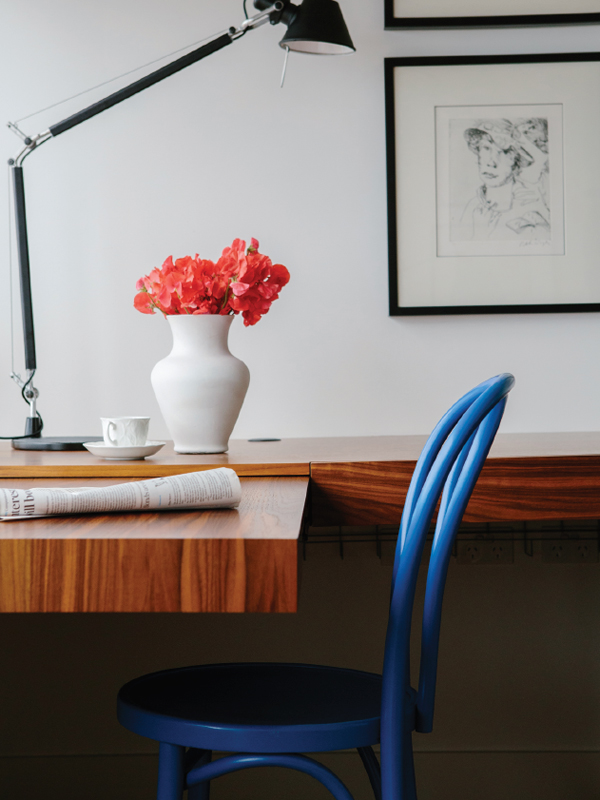
No 18 Thonet chair in Parisian blue with bespoke desk with slide-out extension for a desk with a view.
Comprising acoustic wall panelling upholstered in Pierre Frey’s Macao Bleu De Chine, the wall reads as three-dimensional at a glance. This effect is leveraged by a collection of ceramics of the same shades arranged in the immediate foreground, while a vintage and cherished chair is upholstered in the same colours in an abstracted zigzag motif. Referencing the clients’ collection, the designers explain that no element of design is ever wasted in an interior, particularly if it has an emotional connection. Moreover, accessorising and creating tableaux to complement the whole has become de rigueur. “They had a lifetime’s collection of things, so there was no need to bring things in,” says Arent.
Removing elements, however, was vital. Built-in and redundant technology, for example, had to go and this further freed the interior towards a more relaxed mood. As a case in point, the television no longer dominates the living area, but pivots from a servery wall above a narrow custom table of timber and marble. Another exists in the study, where full-height cabinetry allows the room to read as an elegantly austere combination of desk and cabinetry in beautiful timber. A sliding desk allows the view to be enjoyed directly, while the shelving bookends ensure containment of display and Thonet chairs (No B9 Le Corbusier in birch and No 18 Thonet in blue) add to the slight French ambience of the whole.
One of the golden rules of critical analysis is to never describe something as lovely; however, lovely it is. Perhaps this is why. It is an emotional and subjective description that loses its meaning between differences of taste, which this apartment will polarise. And so it should. The brightness, light, flamboyance and layering of personality and interesting objects conspire to make this an apartment wholly dedicated to its owners, to their aesthetic, their collection and their lifestyle. That it is just one half of their subjective choice is neither here nor there; it is a delight and just as it should be.
Review by (inside) co-editor Gillian Serisier.
You Might also Like

